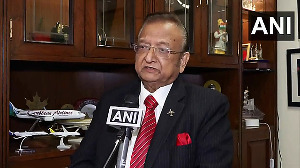The Supreme Court's ruling in the BPSL case exposes deep flaws in the IBC's institutional framework and raises concern about judicial overreach, notes Rajeswari Sengupta.

The Supreme Court's recent decision to liquidate Bhushan Power and Steel Ltd (BPSL), five years after its resolution plan was approved and implemented, has sent shockwaves through India's financial and corporate sectors.
By overturning JSW Steel's takeover of BPSL, the ruling has raised fresh questions about the Insolvency and Bankruptcy Code (IBC) and the institutions responsible for enforcing it.
A landmark reversal
In a major reversal, the Supreme Court ruled that the resolution plan for BPSL, approved by the committee of creditors (CoC) and cleared by both the insolvency and the appellate tribunals (National Company Law Tribunal, or NCLT, and National Company Law Appellate Tribunal or NCLAT), suffered from procedural lapses and non-compliance with the IBC.
The court found the process fundamentally flawed, ordered the return of payments made by JSW Steel to creditors, and directed BPSL's liquidation.
This decision, coming after years of revival of BPSL, could lead to major losses for creditors, which now risk recovering less through liquidation than under the earlier resolution.
Implications for IBC
Introduced in 2016, the IBC was hailed as a major financial reform in India. It aimed to unlock capital from failed businesses, improve credit discipline, and enhance resource-allocation efficiency.
Its success in resolving major bad loans strengthened the financial sector and boosted investor confidence.
However, the court's recent ruling has cast a shadow over its future.
By overturning a resolution plan years after completion, the decision has created uncertainty for creditors and investors, raising concern about the IBC's effectiveness.
Institutional failures exposed
The verdict strongly criticises the institutions involved in the BPSL case.
The NCLT and NCLAT, institutions central to the IBC framework, were faulted for approving a flawed resolution plan, while the CoC was reprimanded for poor judgement and supporting a plan that breached legal timelines and rules.
The resolution professional was blamed for delays and legal lapses exposing weak oversight by the Insolvency and Bankruptcy Board of India (IBBI), the regulatory body for the IBC.
The case for reform
Much of the commentary following the verdict has called for changes to the IBC, but the real problem lies with the institutions enforcing it, not the law itself.
The success of the IBC hinges as much on a sound legal framework as on the capability and integrity of its implementing bodies.
Strengthening the NCLT and NCLAT is essential. They face persistent understaffing, shortages of benches, and limited use of technology.
Many judges come from civil courts and may lack the expertise required in complex commercial cases.
Regular training in insolvency law and allowing the use of amicus briefs in complex matters could help improve the quality of their decisions.
The oversight of resolution professionals by the IBBI also needs urgent reform.
Though the board certifies the professionals, its ability to monitor their actions and hold them accountable remains uncertain.
Stronger enforcement powers and clearer guidelines are needed to ensure resolution professionals meet their legal and fiduciary responsibilities.
The CoC plays a central role in the resolution process under the IBC.
However, the Supreme Court's criticism highlights a key issue: To what extent should courts review the committee's decisions?
Since creditors are expected to act in their own commercial interests, their decisions should generally be insulated from judicial scrutiny.
While judicial review of procedural lapses is justified, questioning the CoC's commercial judgement is more problematic, more so because there are no clear benchmarks for such assessment.
Excessive judicial intervention risks undermining the very foundations of the IBC.
Economic consequences
The economic impact of this verdict is far-reaching.
Banks must now return the funds received from JSW Steel, leading to higher provisioning and potential losses for them, while JSW Steel itself may struggle to recover its investment in BPSL.
The uncertainty triggered by this ruling could make future bidders demand higher risk premiums or avoid distressed assets entirely, further complicating the resolution of bad loans.
This decision could freeze capital, erode investor confidence, and slow private investment -- all key factors crucial to India's goal of becoming a developed economy by 2047.
Legal issues
The court's decision to retrospectively undo an acquisition approved years ago and order liquidation of a company now profitable is also troubling.
While procedural lapses may have occurred, the proportionality of the punishment is debatable.
A statute on limits to judicial intervention in IBC cases could help prevent such reversals.
Without it, the risk of the court overturning settled decisions may deter potential bidders from participating in the resolution process.
A cautionary tale
In summary, the court's ruling in the BPSL case exposes deep flaws in the IBC's institutional framework and raises concern about judicial overreach.
To sustain financial-sector reforms and attract long-term investment, policymakers must urgently address these issues.
Restoring confidence in the IBC requires institutional as well as judicial reforms.
Only by building competent, accountable institutions can the IBC's full potential be realised and the interests of creditors, investors, and the broader economy protected.
Rajeswari Sengupta is associate professor of economics, IGIDR, Mumbai
Feature Presentation: Aslam Hunani/Rediff











